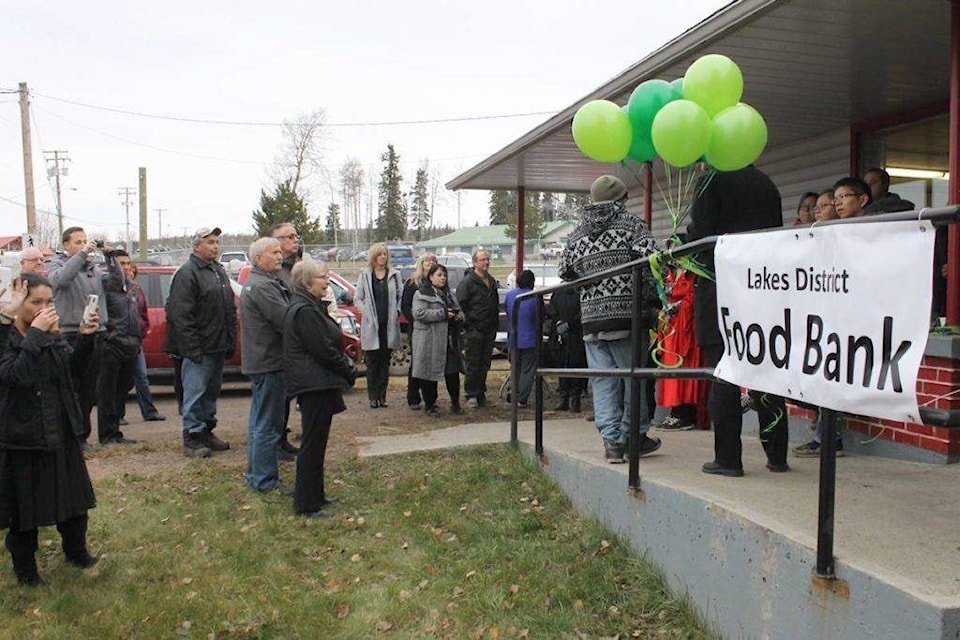The choice between paying the rent and buying groceries or medicine is one that nobody wants to make. But it’s a reality faced by many people living in Burns Lake, according to people working at the front-lines of poverty in local community groups.
The day-to-day struggle of living in poverty was the central theme of a public meeting at the College of New Caledonia on March 26. The meeting was organized by the Lakes District Family Enhancement Society (LDFES), the community group that runs programs including the local food bank. The LDFES is submitting the ideas and information gathered at the meeting to the B.C. government’s poverty reduction program.
Candice Little, coordinator of the Burns Lake food bank, said that 900 individuals received food bank services over the past year — about 11 percent of the nearly 7,900 people living in the Lakes District. About 44 percent of those food bank clients were either young people — up to 19 years old —or seniors aged 60 and up, said Little.
Older people struggling with poverty are often forced to choose between buying food or medicine, said Anne Mowry, a volunteer with the Burns Lake and District Healthcare Auxiliary, which runs the local thrift store. “It doesn’t get easier or clearer as you get older,” she said.
Some aspects of poverty in Burns Lake are particular to life in a rural or northern community, said Tania Cunningham of LDFES and the Elizabeth Fry Society, which supports women and children who have experienced abuse.
Generally speaking, people in the Burns Lake area need a vehicle to access higher-paying entry level jobs, unlike in urban centres, she said. “You can’t just jump on transit,” said Cunningham, adding that people often have trouble finding a car to learn to drive.
“Being poor is a full-time job,” said Birgit Wilson, who works with the Elizabeth Fry Society and LDFES, noting how time-consuming it can be to wait in line at a food bank or scrounge together loans to cover rent or groceries.
And many people can’t afford routine dental care, with the results contributing to social stigma. “If you have a mouthful of rotten teeth, it’s hard to get a job,” said Cunningham.
Participants in the workshop said the overall effect is often hopelessness, which contributes to substance abuse and mental health issues. It’s a snowball effect, said Wilson, with people having to borrow money to get mental health services, going deeper into debt and struggling to pay rent.
Other issues discussed included the complex web of social assistance and housing policies. Barriers to these programs include paperwork that requiring high literacy skills and Internet access, Wilson said. Social assistance policies also prevent recipients from going to school or earning extra money without having their assistance removed, she said.
Racist stereotyping of Indigenous people also contributes to poverty in Burns Lake, participants said, along with the lingering effects of residential schools and other legacies of colonialism. And many issues specifically affect women. For example, single mothers fleeing abusive households have trouble finding affordable childcare while also looking for work.
Participants in the workshop suggested a variety of remedies, including a higher minimum wage, a guaranteed minimum income and a revamping of the entire social assistance program. Ontario is currently testing a basic income program that would provide low-income people in pilot cities with a basic annual income of $17,000.
